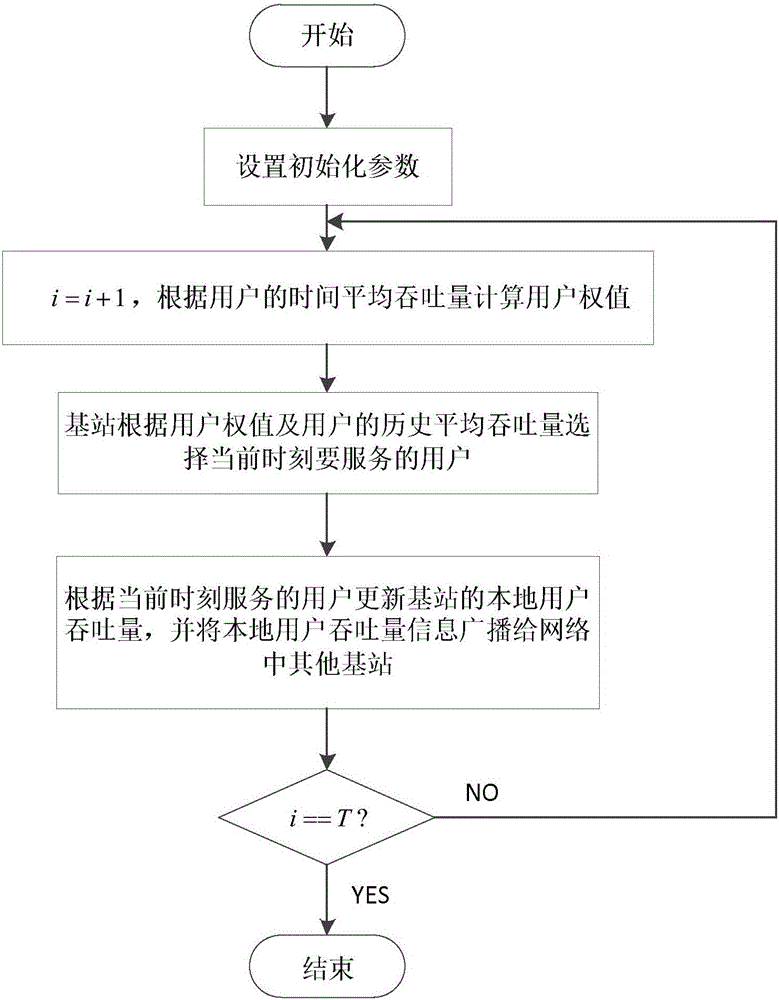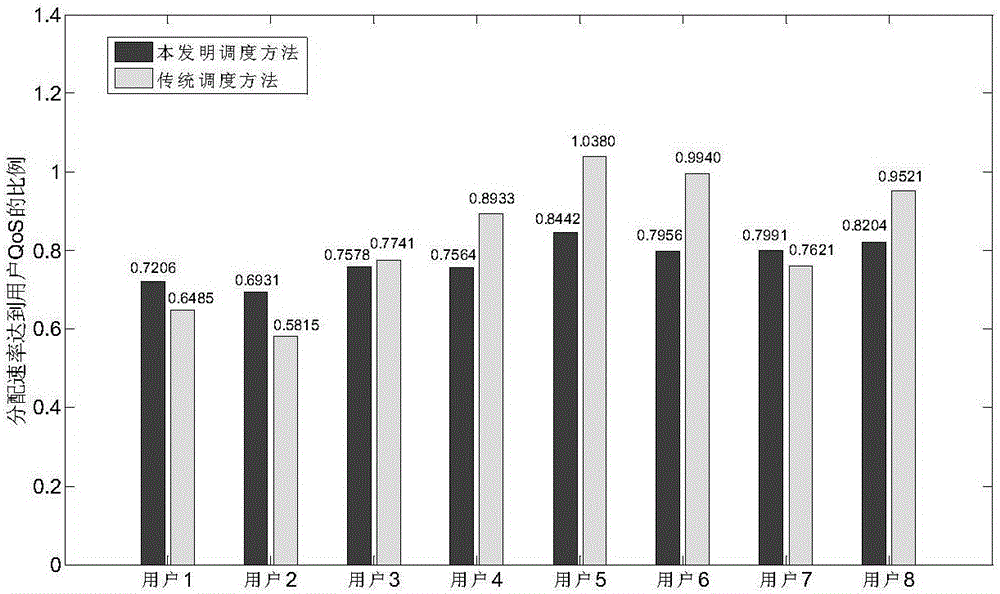Multi-base-station multi-user proportional-fairness scheduling method with guarantee of service quality
A proportional fair scheduling and quality of service technology, applied in electrical components, wireless communication, etc., can solve the problems of not considering the business needs between users, not considering the situation of multiple base stations, and the difficulty of allocating resources to meet business needs
- Summary
- Abstract
- Description
- Claims
- Application Information
AI Technical Summary
Problems solved by technology
Method used
Image
Examples
Embodiment Construction
[0044] refer to figure 1 , the specific implementation steps of the present invention are as follows:
[0045] Step 1, set the initialization parameters.
[0046] Suppose the number of base stations in the system is N, and the number of users to be served is M, where 1<N≤10, 0<M≤50;
[0047] Set the user's service quality set S=[S 1 ,...,S m ,...,S M ], where S m Indicates the service quality requirement of the mth user;
[0048] Set M users to keep the service quality requirement S unchanged in K time slots;
[0049] In the 1st to i-th time slots, the time-average throughput obtained by the m-th user from the n-th base station is expressed as T n,m (i), where n=1,2,...,N, m=1,2,...,M, i represents the number of time slots, initialized to i=1, and let the average throughput of all links T n,m (1)=1 / N.
[0050] Step 2, calculate the user weight according to the user's time average throughput.
[0051] Let time slot i=i+1, according to the time average throughput T of...
PUM
 Login to View More
Login to View More Abstract
Description
Claims
Application Information
 Login to View More
Login to View More - R&D
- Intellectual Property
- Life Sciences
- Materials
- Tech Scout
- Unparalleled Data Quality
- Higher Quality Content
- 60% Fewer Hallucinations
Browse by: Latest US Patents, China's latest patents, Technical Efficacy Thesaurus, Application Domain, Technology Topic, Popular Technical Reports.
© 2025 PatSnap. All rights reserved.Legal|Privacy policy|Modern Slavery Act Transparency Statement|Sitemap|About US| Contact US: help@patsnap.com



